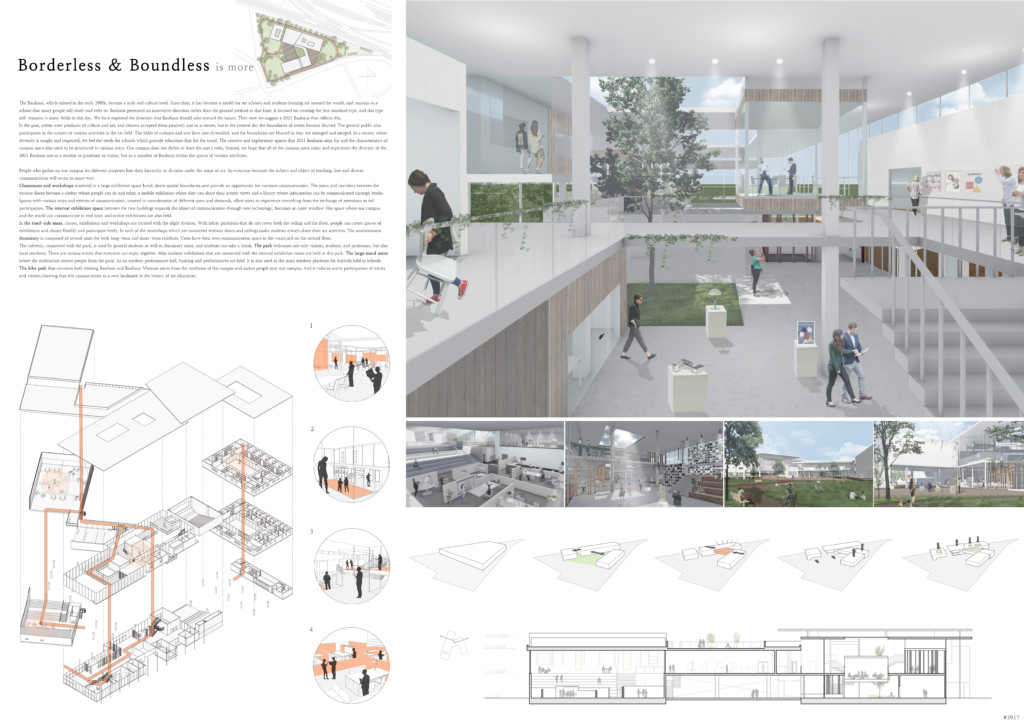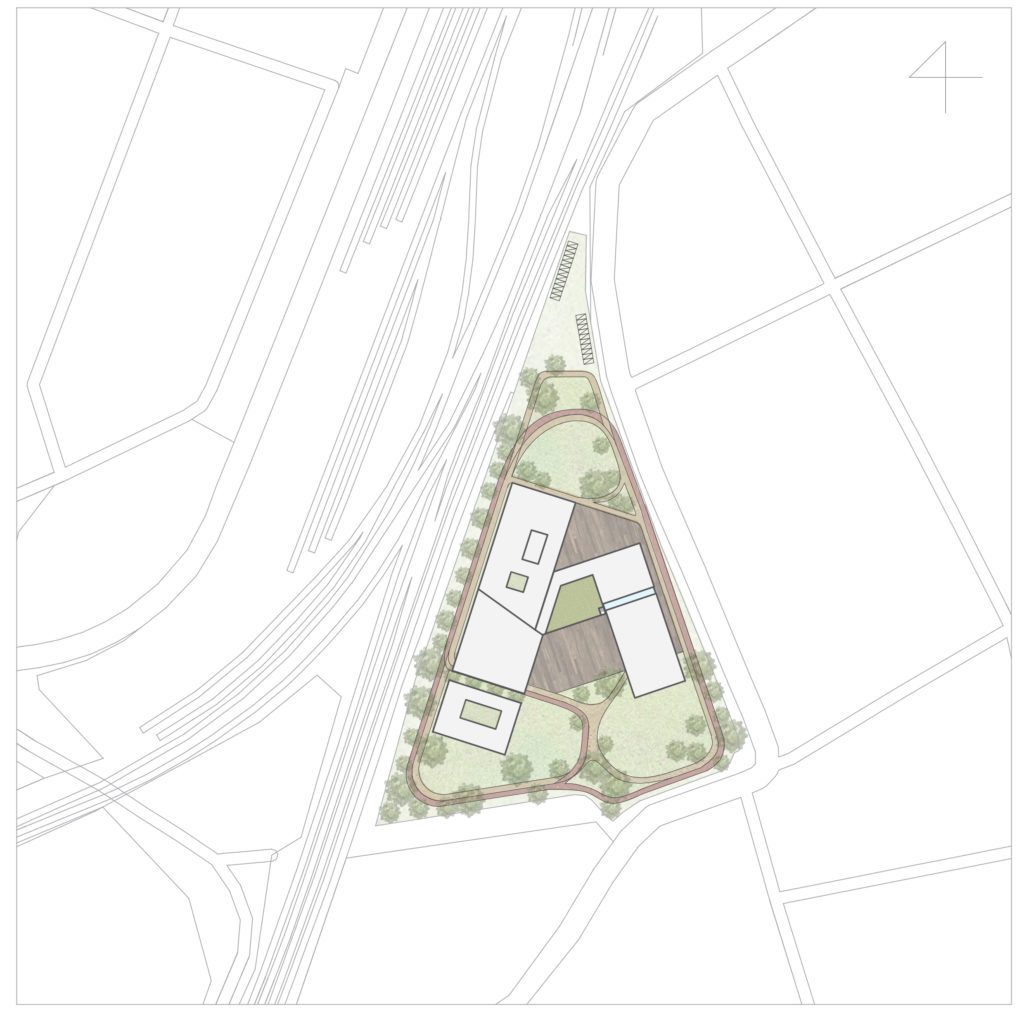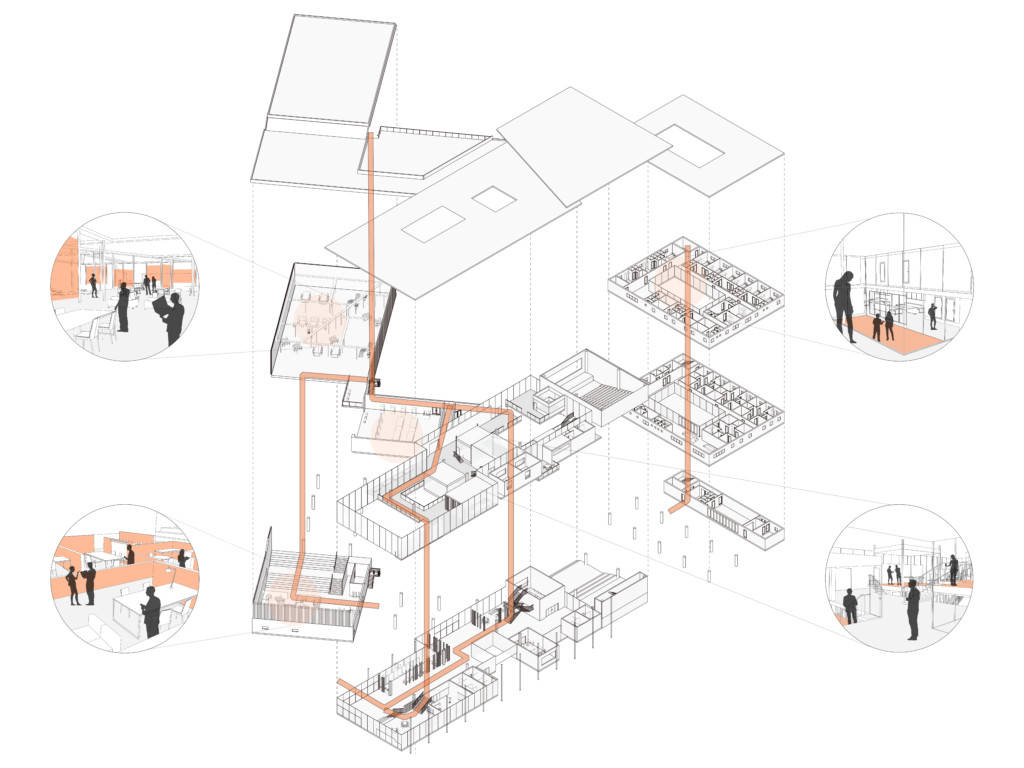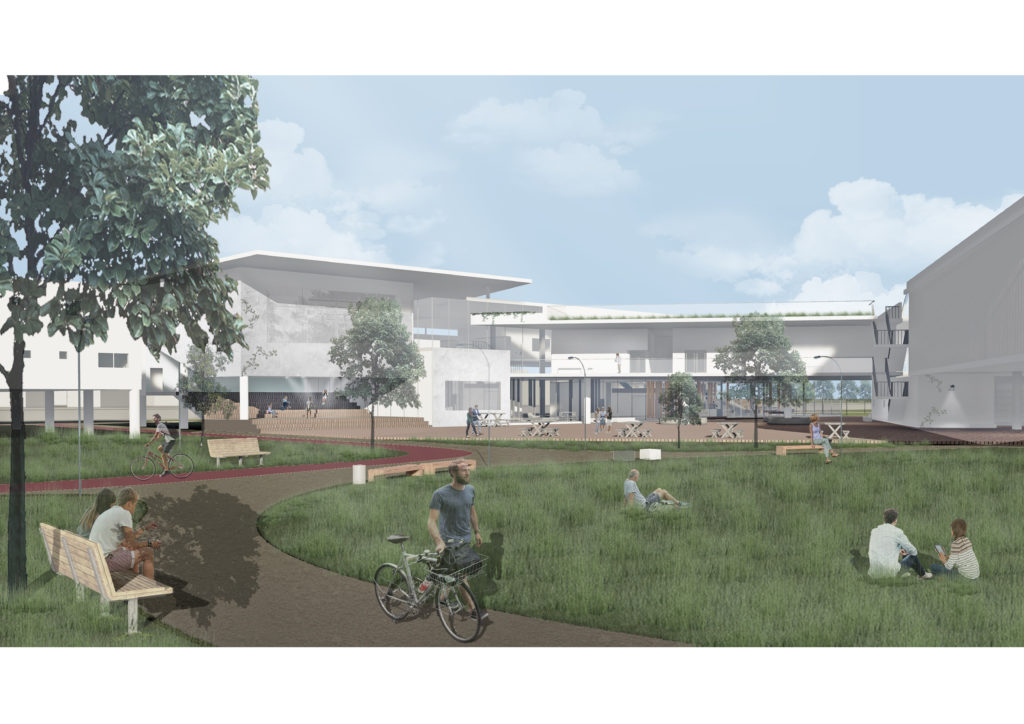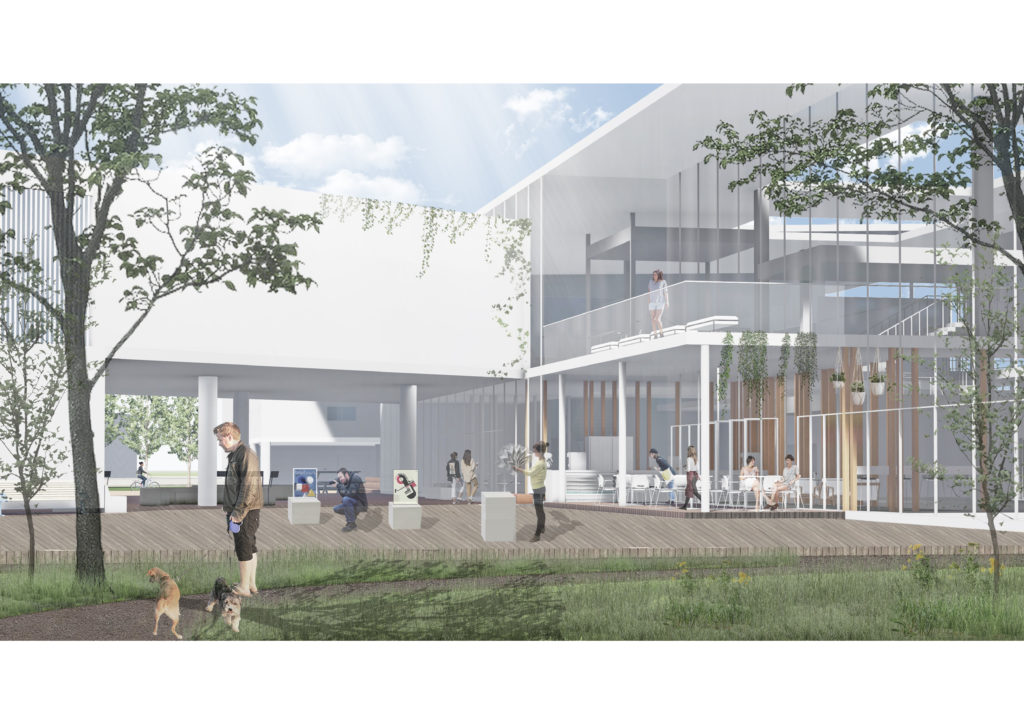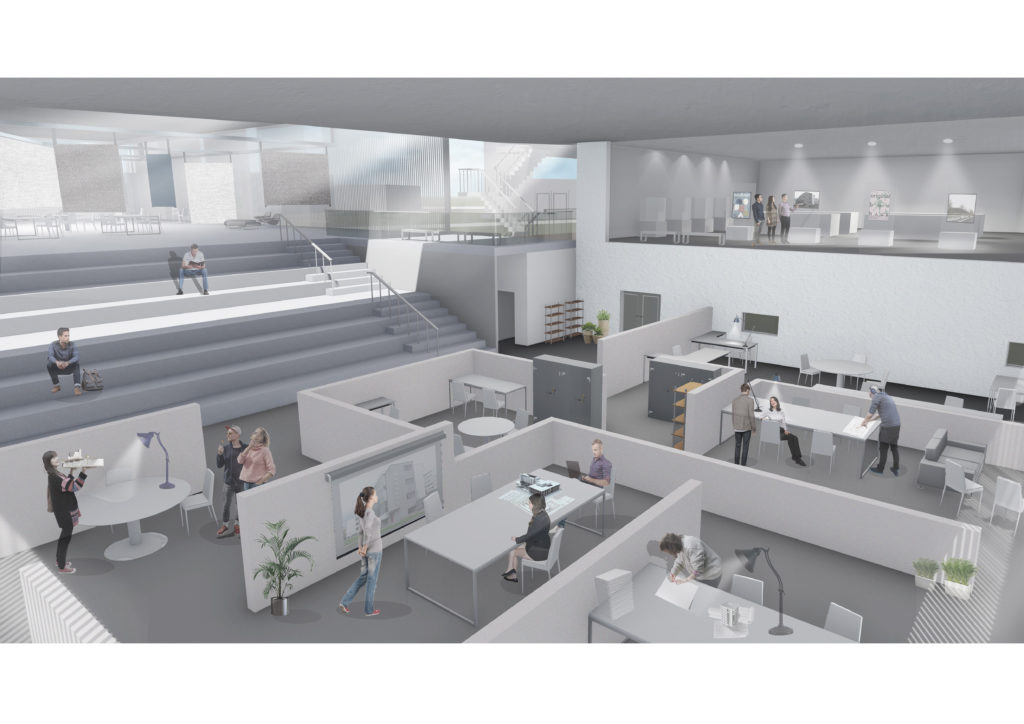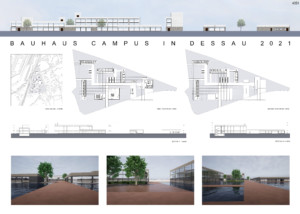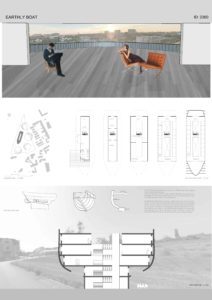The Bauhaus, which existed in the early 1900s, became a style and culture itself. Since then, it has become a model for art schools and students learning art around the world, and remains as a school that many people still study and refer to. Bauhaus presented an innovative direction rather than the general method at that time. It focused on creating the best standard type, and this type still remains in many fields to this day. We have explored the direction that Bauhaus should take toward the future. Then now we suggest a 2021 Bauhaus that reflects this.
In the past, artists were producer of culture and art, and citizens accepted them passively just as a viewer, but in the present day the boundaries of artists become blurred. The general public also participates as the subject of various activities in the art field. The fields of cultures and arts have also diversified, and the boundaries are blurred as they are emerged and merged. In a society where diversity is sought and respected, we feel the needs for schools which provide education that fits the trend. The creative and exploratory spaces that 2021 Bauhaus aims for and the characteristics of campus users also need to be structured in various ways. Our campus does not define or limit the user’s roles. Instead, we hope that all of the campus users enjoy and experience the diversity of the 2021 Bauhaus not as a student or professor or visitor, but as a member of Bauhaus within the spaces of various attributes.
People who gather on our campus for different purposes lose their hierarchy or division under the name of art. As everyone becomes the subject and object of teaching, free and diverse communication will occur in many way.
Classrooms and workshops scattered in a large exhibition space break down spatial boundaries and provide an opportunity for constant communication. The stairs and corridors between the various floors become a shelter where people can sit and relax, a mobile exhibition where they can share their artistic views and a library where information can be communicated through books. Spaces with various ways and extents of communication, created in consideration of different users and demands, allow users to experience everything from the exchange of attentions to full participation. The internal exhibition space between the two buildings expands the object of communication through new technology, becomes an open window-like space where our campus and the world can communicate in real time, and online exhibitions are also held. In the road-side mass, classes, exhibitions and workshops are located with the slight division. With fabric partitions that do not cover both the ceiling and the floor, people can create spaces of exhibitions and classes flexibly and participate freely. In each of the workshops which are connected without doors and ceilings make students always share their art activities. The southernmost dormitory is composed of several units for both long-term and short-term residents. Users have their own communication space in the courtyard on the second floor.
The cafeteria, connected with the park, is used by general students as well as dormitory users, and students can take a break. The park welcomes not only visitors, students, and professors, but also local residents. There are various events that everyone can enjoy together. Also outdoor exhibitions that are connected with the internal exhibition room are held in this park. The large stand stairs below the auditorium attract people from the park. As an outdoor performance hall, busking and performances are held. It is also used as the main outdoor platform for festivals held in schools. The bike path that connects both existing Bauhaus and Bauhaus Museum starts from the northeast of the campus and makes people tour our campus. And it induces active participation of artists and visitors showing that this campus exists as a new landmark in the history of art education.
